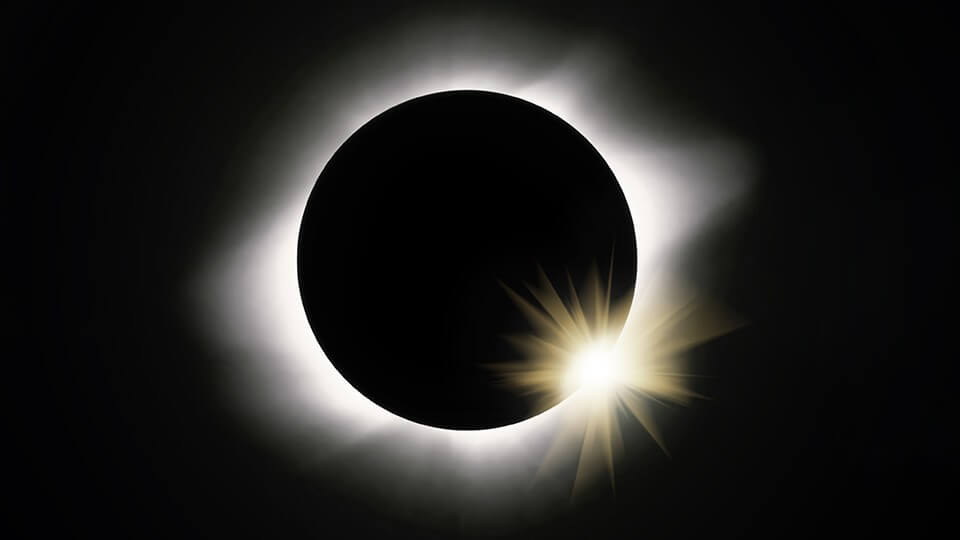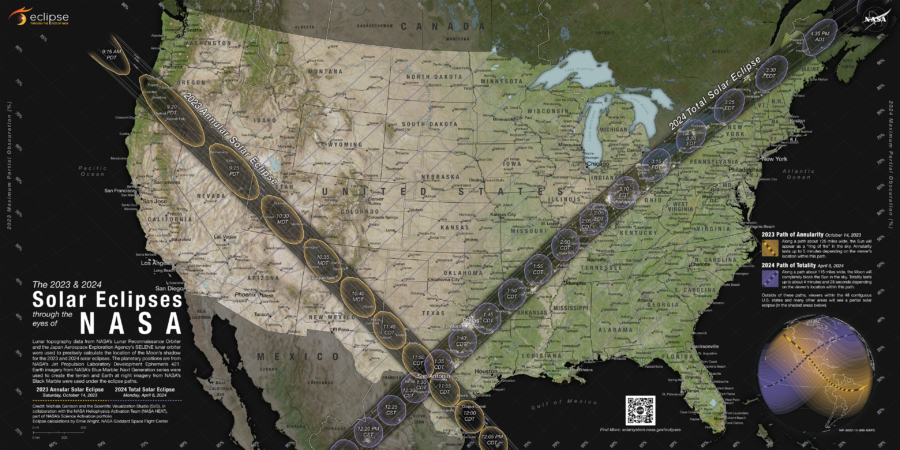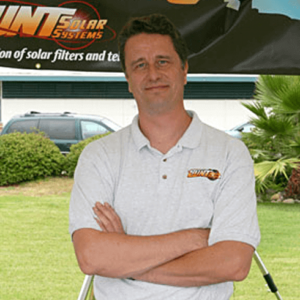
Review the latest USA Total Solar Eclipse:
April 8, 2024
Everyone Always Remembers A Total Solar Eclipse.
I have viewed 3 Total Solar Eclipses. I was lucky enough to partner with National Geographic for the Easter Island Eclipse. It was my first such experience and one I will never forget.
When I tell people that an eclipse is coming their first question is, “Will I see it?” When I tell them that the Eclipse Path is about 200 miles away they shrug and say, “Well I guess a partial is good too, right?” No, it isn’t. Yes, I’m shouting.
There have probably been several partial eclipses in your area in the recent past. They are quite common. Do you remember any of them?
I had no idea what to expect when I went to Easter Island. I was partnered with National Geographic to supply live Hydrogen-alpha images of the Sun during the event using Lunt Solar Instruments. It was work. It was stressful.
We experienced hurricane weather the few days prior to the event. It looked like it was going to be a bust. We ran film of everyone expressing their disappointment that the Eclipse would be rained out.
I could do no testing, no alignment, couldn’t even get my equipment outside to test tracking in the southern hemisphere.
A lot happened during those two days prior to the event. From the grueling flight to the makeshift housing and the inability to get any preparation done. I actually went out on a local fishing boat in horrible weather just to cut the boredom.
The night before the Eclipse we were told by a participating meteorologist that the weather front would ease up in the morning and completely clear 30 minutes prior to first contact. The weatherman said so. He had been tracking the satellite images and timing the front.
The rain came in sideways that night. No one slept under the tin roofs of the makeshift housing. We awoke to rain and high winds. I headed out to the cafeteria for breakfast and to see what was to be done.
And then… The rain began to subside and the wind all but stopped. Our disappointment turned into sheer panic as we collectively realized that the weatherman might actually be right. At about two hours before first contact you could just see the blue skies out to sea. Time to set up… Did I say stressful?

We got everything up and running with about 10 minutes till first contact. A wall of heavy cloud cover crossed the sky behind us and transparent, crystal clear blue skies were above us. Ironically there had been one tiny little cloud straggling behind the front. This cloud happened to cross the Sun just at first contact… but only lasted about 2 minutes.
I remember being in the Nat Geo Mobile Mini control center, watching the Moon slowly cross the Sun’s disk on the various monitors. I was having trouble tracking the Sun due to the reverse direction of the mount and the lack of accurate alignment prior to the event. I worked the tracking for 30 seconds at a time. I took raw footage, converted the files and colorized the images. Lacing it all back together to make short clips over and over again.
As the Sun finally disappeared from the monitors I was relieved. I sat in my chair… I realized that I was alone. At that moment one of the crew came into the mobile telling me to get outside. I hadn’t really thought about it and figured why not?
I walked out of the door to the lab and was immediately in absolute awe at the unworldly site and feeling of Totality. Being on an island we could see what looked like dawn across 360 degrees of horizon. You could see stars, it was eerily quiet, it was dark. Everyone was looking up. I could see the ghostly white whiskers of the Sun’s rays flowing outward from the dark shadow of the Moon. The air felt cool. Wow!
As the Sun broke the spell with a bright flash of light the pent up excitement of the group erupted into hugs, laughter, cheering, crying, dancing, and the odd pop of a champagne cork.
To be honest, describing totality is totally impossible. It is as much about the feeling as it is about the visuals. It’s emotional and personal. What we all shared that day was very special and I will always remember the feeling. Everyone always remembers a Total Solar Eclipse.
It was also then that I realized that I still had work to do. I needed to film the third through final contact. As I sat back down at the monitors I felt relaxed and joyful. I played around with various image and color settings. I ended up getting some great shots in that final hour.
If you are anywhere near the line of totality you should make the effort to drive at least somewhere to experience the event. Preferably somewhere with lots of people. Get there early, test your equipment, bring snacks and water (and maybe some champagne).
But whatever you do, put the tech down during totality and experience the event through all your senses. There will be plenty of images to look at after the event but nothing will compare to how you felt.
My next two eclipses will be in 2023 and 2024. Lunt will be partnering with NASA to broadcast the events live using the Lunt SunLab. Please check back here to view updates to our Solar Eclipse Guide on where we will be and what we will be doing. Or, join our newsletter and receive periodic updates direct to your email.
It is also worth noting that the 2023 and 2024 Eclipses will happen during Solar Maximum. The Sun will be at its most active during this time. There has never been a better time to get a Solar product for viewing or imaging the activity on the surface of the Sun. Check our image gallery to see what the Sun is doing and check out our full line of Solar products here.
When I experienced the Easter Island Eclipse the Sun activity was pretty minimal. We were lucky to have any surface activity at all, the Sun had been completely quiet for weeks.
The 2017 American Eclipse was also a Solar minimum event. But it was still a magnificent event.
Look here to get an idea of what the difference between Solar Minimum and Solar Maximum looks like through a small telescope.

Cheers,
Andy Lunt, Owner/Designer Lunt Solar Systems